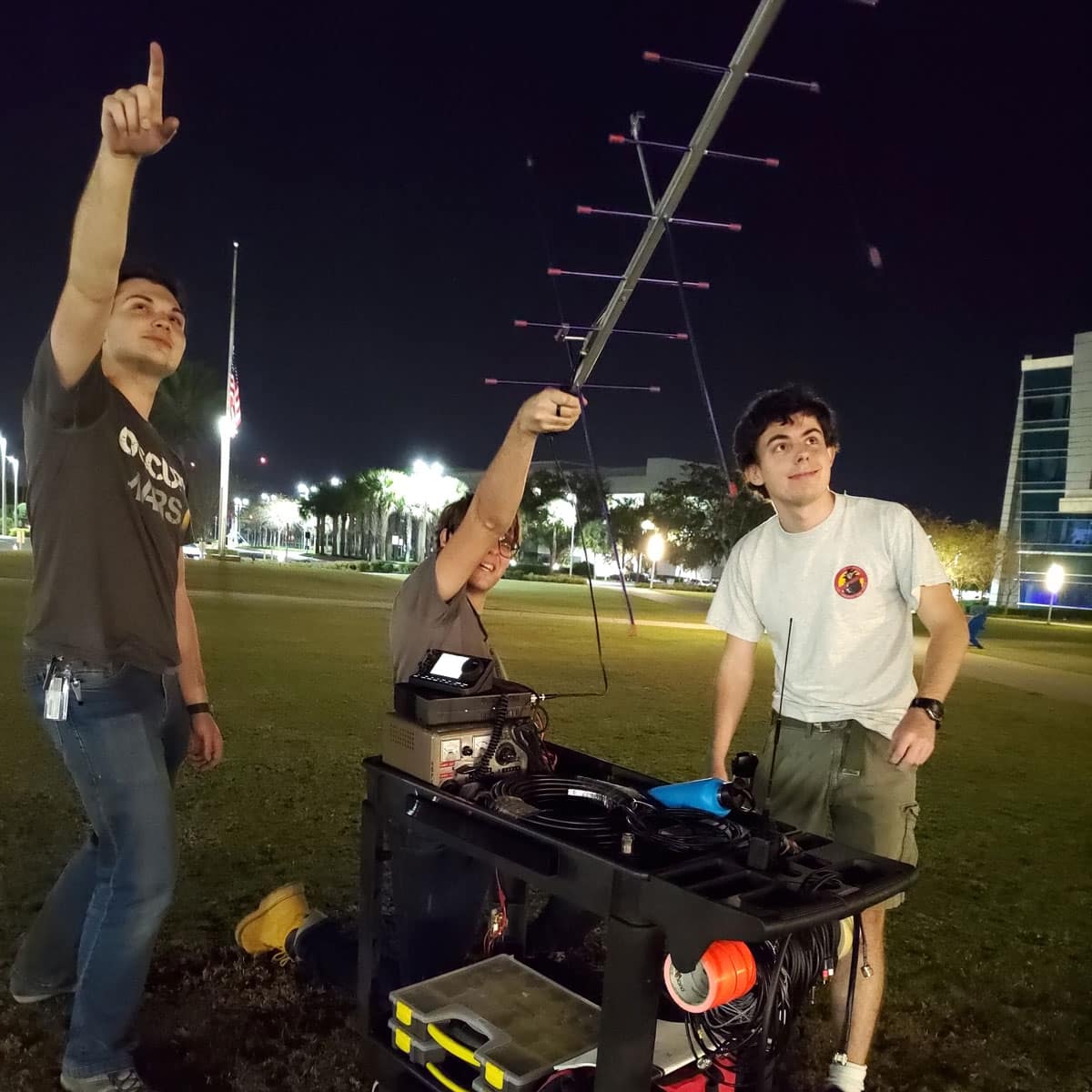STEM Outreach: Embry-Riddle to Connect Students, Astronauts

Embry-Riddle Aeronautical University students and faculty plan to connect Volusia County, Florida, middle-school youth with crewmembers aboard the International Space Station (ISS) using amateur radio.
The plan, supported by Embry-Riddle alumna and former astronaut Dr. Nicole Stott (’87), moved a step closer to reality earlier this month when Embry-Riddle earned provisional approval to take part in the Amateur Radio on the International Space Station, or ARISS-USA, program. Embry-Riddle’s College of Engineering (COE), on its Daytona Beach Campus, is now putting together an equipment plan for review by the ARISS competition organizers.
It would have been amazing to talk to an astronaut in space from my middle school! The look on the students’ faces when they get a chance to talk on the rig will be reward enough, and that’s on top of all the incredible people we’ve met in the process of organizing this.
To serve some 500 Volusia County students, grades six through eight, Embry-Riddle is organizing a yearlong series of science, technology, engineering and mathematics (STEM) outreach activities. As a grand finale, selected students will have a chance to speak directly with ISS crewmembers who are in space via amateur radio.
The program will focus on schools where students may face socioeconomic challenges. Embry-Riddle is collaborating with Volusia County Schools, the Daytona Beach Amateur Radio Association, Embry-Riddle student organizations and the educational nonprofit Tier One Two Aspire Leap (TOTAL) Inc.
“Through the ARISS radio project, Embry-Riddle will work to foster relationships with underserved students in our community to open meaningful pathways to STEM education and professions,” said Dr. Jim Gregory, College of Engineering dean. “With our collaborators, our goal is to increase local K-12 students’ exposure to STEM through hands-on activities, sharing our passions of amateur radio, space travel, science and engineering.
Gregory expressed gratitude for support from ARISS as well as the Paul B. Hunter and Constance D. Hunter Charitable Foundation, Inc.
Student Clubs to Provide Support
Two Embry-Riddle student clubs, directed by two Aerospace Engineering students, will provide essential support for the ARISS project. Participation by the Amateur Radio Club will be directed by Paul Bartolemea, club president. STEM Outreach Club President Alex Maschner will oversee that group’s contributions.
The ARISS project “offers us a unique opportunity to make a two-way contact with the ISS, something that only a select few can claim to have completed,” said Bartolemea. “It’s also a spectacular opportunity for learning, experience and teaching.”
Bartolemea added that he loves giving back to the community. “The look on the students’ faces when they get a chance to talk on the rig will be reward enough,” he said, “and that’s on top of all the incredible people we’ve met in the process of organizing this. We’ll gain an enormous amount of experience with the sort of equipment and software required to orchestrate this dance of signals, and it’ll be a great way to bring Embry-Riddle students into the clubs as well.”
Hands-on activities such as “fox hunting” — an exercise (otherwise known as geocaching) that involves locating a hidden beacon that is transmitting a signal — as well as antenna building will convey scientific concepts related to electromagnetic fields and waves. Students will also examine images of space captured through the invisible electromagnetic spectrum and gain insights on orbital mechanics and satellite tracking, as well as changes in the observed wavelength, or frequency, of emissions (Doppler shift) and radio frequency identification tags.
In addition to in-school lessons and outreach, Embry-Riddle will partner with TOTAL Inc. to engage summer camp students in STEM activities. TOTAL Inc. is working to meet future U.S. workforce needs by sparking students’ interest in STEM, Gregory explained. At Embry-Riddle, faculty will introduce campers to the basics of rocketry and amateur radio.
Throughout the yearlong program, students will develop and prioritize questions they would like to ask during the ARISS radio contact with an ISS crew member. During an online program kickoff meeting on May 22, ARISS leadership emphasized that they want to hear original, carefully developed questions that haven’t been asked many times before and can’t be answered by the Google search engine.
As the orbiting ISS passes the school selected for participation in the ARISS program, a radio link is established, astronaut Tim Peake explained in a 2016 YouTube video. Because the ISS is orbiting at about 18,000 miles per hour, he noted, “We usually get nine or 10 minutes of radio contact before losing the signal.”
Pamela Peer, Embry-Riddle’s director of Community Outreach and Summer Programs, said that activities such as the ARISS initiative are essential for bringing more young people into the science and technology pipeline.
“To get students excited about STEM, we need to provide them with opportunities that will inspire them and open doors to endless possibilities for their future,” Peer said. “Everyone at Embry-Riddle is honored to provide local students with enrichment activities — and potentially a chance to speak directly with an astronaut!”
Along with Gregory, other College of Engineering faculty members taking part in the ARISS program will be David Richter, Eduardo Rojas and Heidi Steinhauer. Embry-Riddle IT expert Stephen Baker and others are also supporting the project.

 Ginger Pinholster
Ginger Pinholster